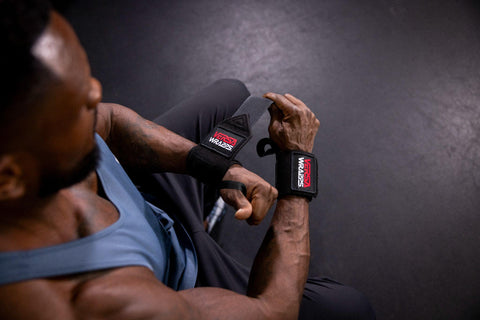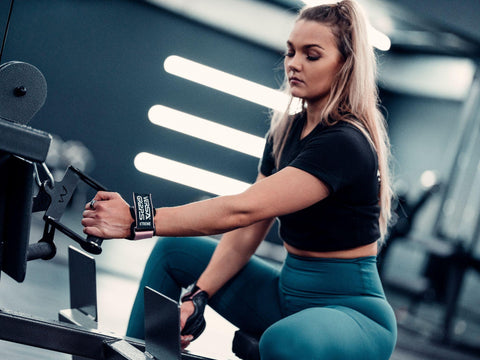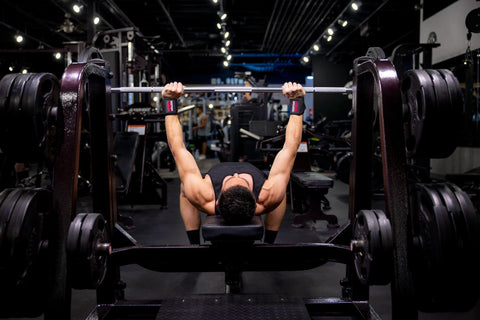May 16, 2025 4 min read

When you’re serious about training, having the right gear is everything. Weightlifting aids can help you lift more weight, train longer, and stay safe while doing it. Lifting grips and lifting wraps support your wrists, improve your grip, and help you maintain proper form—especially during heavy lifts.
Whether you’re pushing for a new PR or working through high-rep sets, the right support can help you stay locked in. You might be wondering: what do wrist wraps do for lifting? Or how can weightlifting grips help you level up? Ahead, we’ll explore the subtle differences between grips and wraps to help you decide which one is best for your goals.
Lifting grips and lifting wraps both support your performance in the gym, but they do it in different ways.
Both tools help you lift safer and smarter—you just need to pick the one that matches your workout goals.
|
Lifting Grips vs. Wrist Wraps: Side-by-Side Comparison |
||
|
|
Wrist Wraps |
Lifting Grips |
|
Supports Wrists |
|
|
|
Improves Form |
|
|
|
Boosts Heavy/Max Weight |
|
|
|
Reduces Tendon/Ligament Strain |
|
|
|
Prevents Hyperextension |
|
|
|
Increases Stability |
|
|
|
Reduces Risk of Injuries |
|
|
|
Good for Injury Recovery |
|
|
|
Designed for Pushing Moves |
|
|
|
Designed for Pulling Moves |
X |
|
Lifting wrist wraps protect and stabilize your wrists during heavy lifting. By holding your wrist in a neutral position, they help align your joints and reduce strain. This improves force transfer from your arms to the bar and helps prevent injuries like sprains or strains.
When you’re lifting serious weight (especially during pressing exercises like bench presses, overhead presses, or lateral raises) this added stability can make a huge difference.
Wrist wraps also help you avoid hyperextension, which happens when your wrist bends too far backward under pressure. By locking in your wrist position, they give you more control—and confidence—when lifting.
Use wrist wraps for:

Weightlifting grips—especially all-in-one options like Versa Gripps—are a versatile tool that combines the benefits of lifting straps, hooks, and gloves into one simple design. Like wraps, lifting grips stabilize your wrists while also locking your hands onto the bar. This reduces strain, improves grip, and prevents slippage—even when your hands are sweaty.
Weightlifting grips are ideal for both pushing
and pulling movements like deadlifts, rows, and pull-ups. The gripping surface takes pressure off your hands and forearms, so grip fatigue doesn’t limit your performance. This means you can lift heavier, do more reps, and stay focused on form, while avoiding hyperextension.
Here’s when to use weightlifting grips:

Bottom line: Both wraps and grips can help you train better by stabilizing your wrists, improving your grip on the bar, and helping you maintain good form. This is essential for mind-muscle connection, which can help you get bigger gains.
When it comes to safety, design, and durability, Versa products truly are in a class of their own. For pushing moves like bench presses and overhead presses, Versa Wrapps are your go-to grip. For pushing and pulling moves, Versa Gripps are your all-in-one solution.
Shop the entire collection of Versa Gripps and Versa Wrapps, and train better.
Copyright Versa Gripps 2025